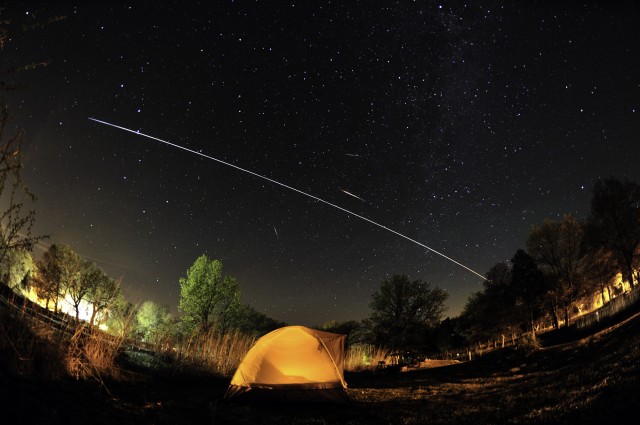
It's a shame about the May Camelopardalids. This year's most-hyped potential meteor shower didn't pan out, to the chagrin and oft-tweeted plaints of the multitudes who stayed up late Friday and early Saturday to scan the heavens for possible fireworks.
The reason so many were watching was the mere suggestion that the Camelopardalids — here's how to say that — could be an event on par with the unforgettable 2001 Leonids. With the vision of that meteor storm in my memory, I stayed up in a Berkeley backyard to see exactly zero meteors over a 90-minute period. I know a few people who say they saw one or two meteors, possible Camelopardalids, but nothing more than that.
But I did get something out of it. First off, a reacquaintance with the summer constellations as the climbed into the midnight sky. Hercules and Bootes, how ya doin'?
Second, I've come across some beautiful technology-assisted images of the Camelopardalids sky show. We're partial to the picture above, shot by Toronto photographer Malcolm Park. Click on that image for a larger version, which shows three short meteor trails emerging pretty closely from the shower's radiant point in the contellation Camelopardalis. Also featured: a nice bright pass of the International Space Station.
Third and last: A reminder of how much we don't know about our cosmic neighborhood. One of the reasons astronomers were excited by the May Camelopardalids was the fact they simply didn't know what to expect. As NASA said last week, astronomers don't know much about the relatively recently discovered Comet 209P/LINEAR or the debris trail it has left behind — the potential source of the Camelopardalids shower. So, the very fact the meteors were a no-show provided valuable information to those studying the solar system.